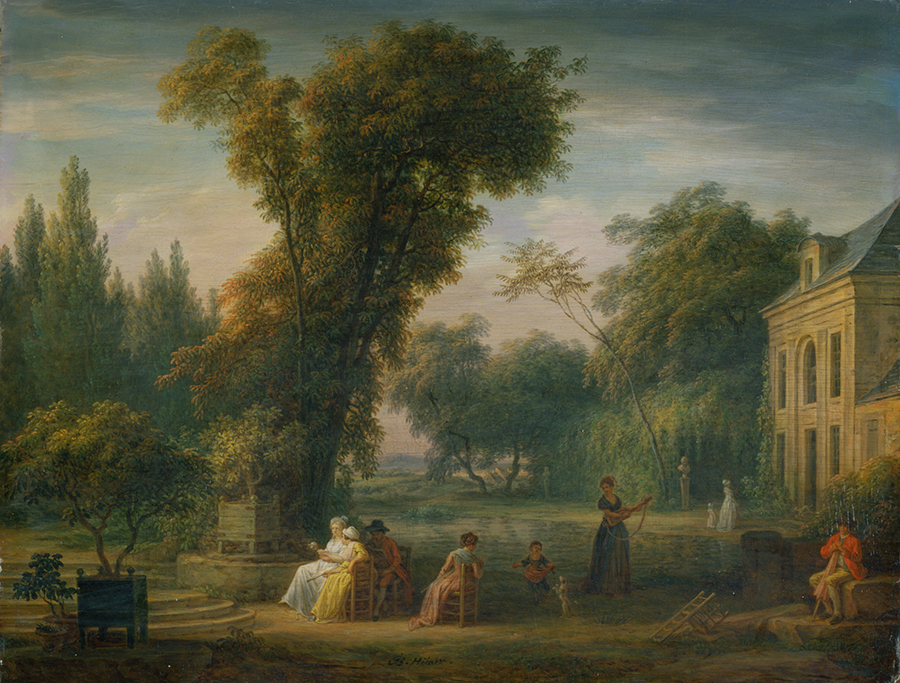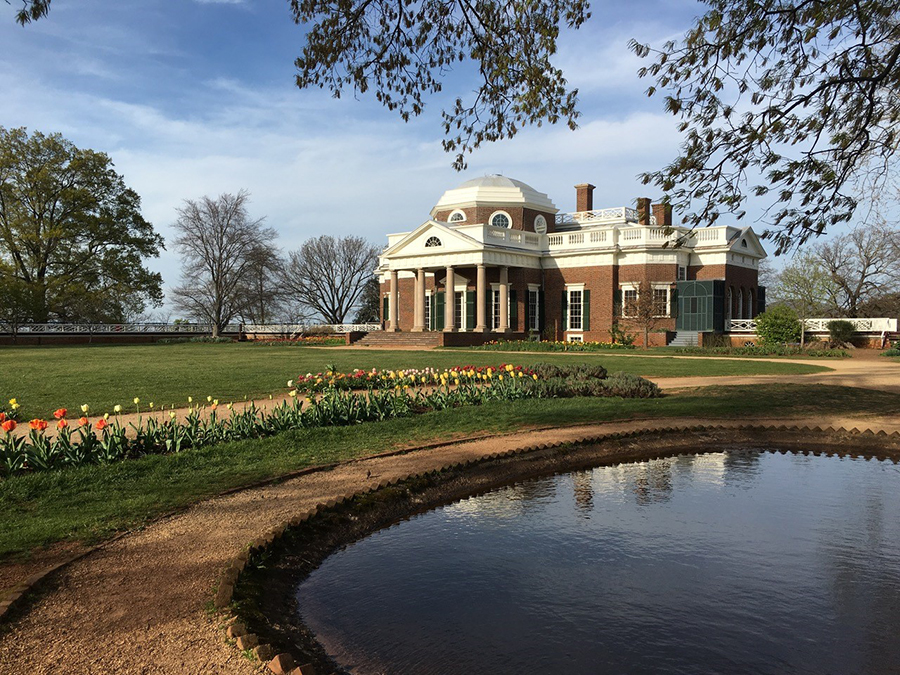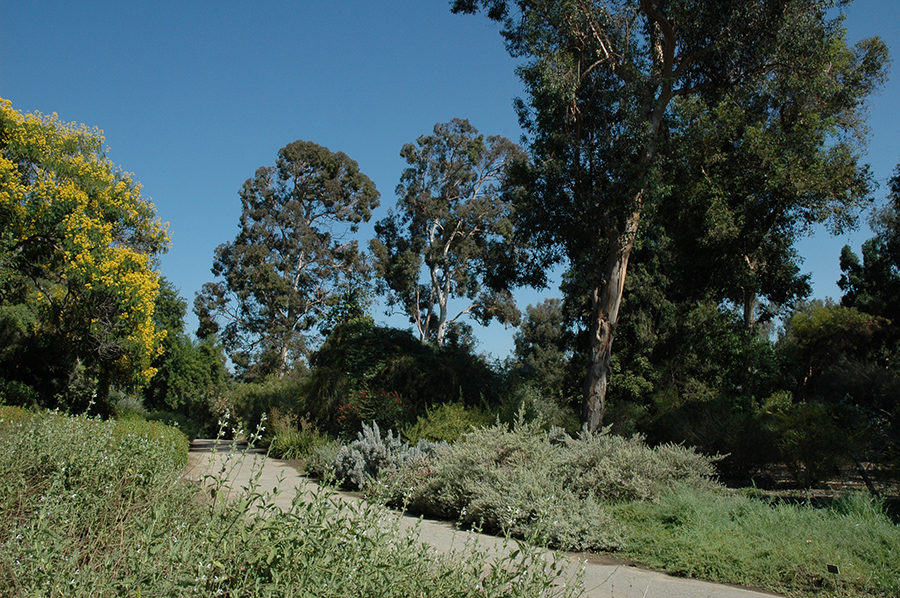The Huntington’s blog takes you behind the scenes for a scholarly view of the collections.
Moving Landscapes
Posted on Thu., Dec. 6, 2018 by and

Dans le Jardin, ca. 1795, by Jean-Baptiste Hilair. Oil on panel, 12 3/8 x 16 1/8 in. (31.4 x 41 cm.). Adele S. Browning Memorial Collection, gift of Mildred Browning Green and Honorable Lucius Peyton Green. (This painting is on view on the second floor of the Huntington Art Gallery.) The Huntington Library, Art Collections, and Botanical Gardens.
What do we mean by an "English," a "French," or an "American" garden? What are the differences between them in the early modern transatlantic world, and what might they—or those who experience them—still share? These are some of the questions what we want to explore during our conference, titled "Moving Landscapes: Gardens and Gardening in the Transatlantic World, 1670–1830." (The conference will take place in The Huntington's Rothenberg Hall on Dec. 7 and Dec. 8, 2018.)
Our aim is to explore these early modern gardens as spaces created by the movement of people, ideas, and designs, as spaces in which one is often acutely aware of national distinctions and of geographical difference, but also as spaces where one might be moved by emotion, moved to imagine communities and social bonds beyond immediate national boundaries. Focusing on the relation between nationhood, cosmopolitanism, empiricism, and experience, our conference acknowledges the disjunctions between the designed landscapes of Europe and North America, but seeks to explore how the 18th-century transatlantic world imagined, felt, and articulated the relation between them.
By focusing on the physical making of landscape—in the form of the garden—we want to highlight the peculiar status of gardens as spaces at once abstractly symbolic and personally emotive, spaces in which shared experience and national difference are repeatedly confronted. Landscape—of whatever kind—comes into being with a point of view. Not simply a product of vision, however, landscape is also an experience of emotion, a merging of geography, self, and sensation; and, if its concern with location often brings with it other forms of dislocation, so it relies on forms of representation that invite us to see something else, or in relation to something else. Nowhere is this more the case than in the garden, a designed landscape with designs upon us.

Thomas Jefferson, the third president of the United States, designed the gardens at his plantation, Monticello, near Charlottesville, Virginia. Photo courtesy of Stephen Bending.
To understand gardens in these terms requires us to understand the larger landscapes in which they are located, and so the conference also asks how the garden might be imagined in relation to the farm, the city, or the plantation, but imagined too in relation to the native and the national, to the international and the cosmopolitan, to the past, to visions of civilization, and to ideas of progress. To speak in the language of transatlantic trade, that is, we want to explore just what is being imported or exported across borders: what moves across oceans, what arrives at the end of a journey across the sea, what transformations take place through local geographies and local needs?
By emphasizing landscape as experience, and the garden as a place in which experience is always heightened by expectation and design, our aim is to explore shared cultures and disparate geographies, competing viewpoints and imagined communities. Looking from both sides of the Atlantic, the question we most want to ask is how gardens—and those who make, or visit them—see themselves and their place in the Atlantic world?
All of our speakers work at disciplinary boundaries, and we have invited them to challenge older understandings of the garden that continue to emphasize the borders of nation states and national geographies. By grappling with botany and empire, with nationalism and cosmopolitanism, with shared cultures and disparate experiences, with designed landscapes and what lies beyond them, we hope to find shared ground between the oceans.

Directly below and parallel to the Subtropical Garden, the Australian Garden at The Huntington is a five-acre open expanse of trees and shrubs that offers a pleasant contrast to the paths and manicured lawns located on the hilltop. The Huntington Library, Art Collections, and Botanical Gardens.
With its own extraordinary gardens still in the making, The Huntington provides us with one more—quite eloquent—speaker. Many of the rare and exotic plants held in the botanical collections were first imported into the Western world from Asia during the 18th century; and the designations within The Huntington's gardens of nationalized and localized spaces (Australian, Japanese, Chinese, California) inherit and expand upon the practice of describing national boundaries in garden design from the Enlightenment onwards. Our speakers will engage with the impulses and desires that initiated the practice of collection and exchange in the Atlantic world; but delegates at the conference will also have an opportunity to explore The Huntington's gardens in the company of those who know them best—its curators and gardening staff.
Stephen Bending is senior lecturer in English and director of the Southampton Centre for Eighteenth-Century Studies at the University of Southampton.
Jennifer Milam is professor of Art History and head of the School for Culture and Communication at the University of Melbourne.